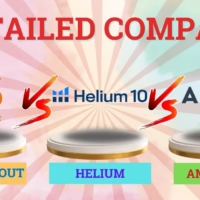Learn proven techniques to boost WordPress loading times for Saudi visitors using local CDNs and caching.
Table of Contents
Introduction
Do you run a WordPress site for people in Saudi Arabia? You need it to be fast. Fast pages make visitors happy. They help your site rank better in search results. They also lead to more sales.
Site speed changes how people use your site. A slow site makes people leave. A fast site makes them stay.
This guide gives you a simple, step-by-step plan. It focuses on what works for visitors in Saudi Arabia. You will learn about hosting, CDNs, and simple fixes. We also include a ready-to-use checklist.
Measure and Diagnose First
Why You Should Measure First
You need to know how fast your site is now. This tells you if your changes work. Different pages have different speed issues. Your home page, product pages, and blog posts can each be slow for unique reasons.
Watch your Core Web Vitals. These are key speed signs that affect your search ranking and user experience.
Tools to Use
- Google PageSpeed Insights: Shows speed on mobile and desktop. Gives tips to improve.
- WebPageTest: Gives deep details on load times. You can test from a location near Saudi Arabia.
- GTmetrix: Shows a timeline of what loads and offers advice.
- Real User Monitoring (RUM): Tracks actual speed for your Saudi visitors.
How to Run Good Tests
- Test from different places like Riyadh, Europe, and the US.
- Use both lab tools (like PageSpeed) and real user data (RUM).
- Write down these numbers: TTFB, LCP, INP, CLS, total page size, and number of requests.
- Test again after every big change to see if it helped.
Why Core Web Vitals Matter
- LCP measures how fast the main content loads. Aim for under 2.5 seconds.
- INP measures how fast the page responds to clicks. Aim for a quick response.
- CLS measures how much the page jumps around as it loads. Aim for a low number.
Making these better helps your SEO and your site’s success.
Hosting and Infrastructure: The Base for Saudi Visitors
Pick the Right Host and Server Location
Use a cloud host that lets you pick a data center near Saudi Arabia. This makes your site faster for local visitors.
For an easier option, use a service like Cloudways. It lets you choose a provider and server region that works well for Saudi users.
We have a full guide to help you pick a host. Read our guide on WordPress hosting in Saudi Arabia.
Why VPS/Cloud is Better Than Cheap Shared Hosting
Shared hosts can be slow when many people visit your site. A VPS or cloud host with fast storage gives you steady speed. If you can, pick a host that uses the latest PHP and HTTP/2 or HTTP/3.
Use a Content Delivery Network (CDN)
A CDN stores your site’s files on servers around the world. For Saudi visitors, use a CDN with servers in the Middle East. Good choices are Cloudflare, Fastly, BunnyCDN, or KeyCDN.
A CDN also takes load off your main server. It can send optimized images and compressed files.
DNS and Latency
Use a fast DNS provider like Cloudflare or Amazon Route 53. A faster DNS helps your site start loading more quickly.
Choose Modern Tech
Use HTTP/2 or HTTP/3 if your host allows it. They make connections faster. Always run the latest stable version of PHP. New PHP is much faster.
On-site Optimizations: Front-end Wins
Make Pages Smaller
Fewer files and a smaller page size mean faster loads. Look at your CSS, JavaScript, fonts, and images. Make them fewer and smaller.
Handle CSS and JS Smartly
Combine and shrink important CSS and JS. Delay loading non-critical JS so it doesn’t block the page.
Put the styles needed for the top part of the page right in your HTML. Load the rest later.
Optimize Images for Saudi Users
Use responsive images so phones don’t download huge files. Use new formats like WebP for smaller files. Compress images well. Use lazy loading for images that are off-screen.
Font Optimization
Use only a few custom fonts. Preload the most important font files. Use font-display: swap so text shows right away.
Pick a Light Theme and Fewer Plugins
Choose a simple, fast theme. Avoid big themes with lots of unused code. Use only the plugins you need. Remove ones that add heavy code or slow down your site.
Shrink and Compress Files
Turn on GZIP or Brotli compression on your server or CDN. This makes files smaller when they are sent. Use tools to minify your CSS and JS.
Use Browser Caching
Tell browsers to store your site’s files for a long time. Use versioned file names so users get new files when you update.
Preload Key Resources
Tell the browser to connect early to important third-party sites. Preload key scripts and styles to help the main content load faster.
Reduce Third-Party Scripts
Scripts for chat, ads, or analytics can slow your site. Remove any you don’t need. Load the rest in a way that doesn’t block the page.
Caching and Server-side Improvements
Page Caching
Saving full pages as static HTML is a huge speed boost. Use server-level caching or a good WordPress caching plugin like WP Rocket. For sites with logins, set rules so private pages aren’t cached.
Object and Database Caching
Use Redis or Memcached to store common database queries. This speeds up dynamic content.
OPcache and PHP Tuning
Turn on PHP OPcache. It stores compiled PHP code for faster execution. Make sure your host supports it.
Database Optimization
Clean up old post revisions and temporary data. Use a plugin like WP-Optimize, but always backup first.
Background Jobs
For busy sites, use a server cron job instead of the default WP-Cron. Move heavy tasks like image processing to external services.
Staging and Deployment
Test all changes on a staging site first. Deploy optimized files as part of your update process.
Advanced Techniques for Power Users
HTTP/3 and QUIC
HTTP/3 is great for high-latency networks and mobile users. Use it if your setup supports it.
Edge Computing
Move complex tasks to edge servers. This reduces trips to your main server.
Image Transformation at the Edge
Use a CDN that can resize and convert images on the fly. This saves your server from doing the work.
Reduce JavaScript Load
For sites with lots of JavaScript, load interactive parts only when needed. Show static content first.
Cache API Responses
For headless WordPress, cache API calls. Use queries that send less data.
Balance Security and Speed
Security tools like firewalls are important. Tune them so they don’t add too much delay. A CDN-based firewall can help.
Local SEO and Saudi-specific Tips
Language and RTL Support
Make sure your Arabic pages use the right encoding and right-to-left (RTL) layout. Keep the CSS clean and fast.
See our guide on WordPress hosting with full Arabic support.
Local Hosting and Rules
Check if you need to store data within the country. Use servers or CDNs in the Middle East for lower latency.
Mobile-First
Many Saudi users browse on phones. Make sure your site is fast on mobile. Use smaller images and think about offline use.
Checkout Speed (for Online Stores)
Make the checkout process simple. Avoid redirects and slow payment scripts. Cache everything you can.
Localized Caching
Set your cache rules to handle both English and Arabic pages correctly. Avoid mixing them up.
Step-by-step Plan (What to Do)
Phase 0 — Backup and Baseline
- Backup your whole site.
- Record your current speed scores.
Phase 1 — Hosting and DNS
- Move to a cloud/VPS host if your current one is slow. Our hosting guide can help you choose.
- Pick a server region near Saudi Arabia or use a CDN with Middle East servers.
- Switch to a fast DNS provider.
Phase 2 — Caching and PHP
- Turn on server-level caching or set up WP Rocket.
- Enable OPcache and update to the latest PHP.
- Set up an object cache with Redis or Memcached.
Phase 3 — CDN and Edge
- Set up a CDN with Middle East servers. Turn on Brotli compression.
- Configure cache and purge rules. Optimize images on the CDN.
Phase 4 — Front-end Optimizations
- Make images better: use WebP, set up responsive images, use lazy load.
- Put critical CSS in your HTML. Delay other CSS and JS.
- Minify and combine CSS/JS if it doesn’t break things.
- Use fewer fonts. Preload key fonts and use
font-display: swap.
Phase 5 — Database and Plugins
- Clean your database: remove old post revisions and temporary data.
- Replace heavy plugins with lighter ones.
- Move email, analytics, and big jobs to outside services.
Phase 6 — Test, Check, Monitor
- Test again from Saudi locations. Compare to your first scores.
- Watch your real user speed data.
- Do monthly checks: update PHP, clear cache, and review your plugins.
SEO and UX Checklist (Quick Look)
- Baseline speed recorded.
- Host has servers or CDN points near Saudi Arabia.
- CDN is on with compression and image optimization.
- Using latest PHP and OPcache.
- Full page and object caching are working.
- Images are in WebP/AVIF and use srcset.
- Critical CSS is inlined; blocking JS is delayed.
- Fonts are optimized (preload, swap).
- Third-party scripts are reviewed and delayed.
- WP-Cron is replaced with a server cron.
- Database is clean.
- Using Redis/Memcached.
- Real user speed is being watched.
Informative Links and Further Reading
- WordPress hosting in Saudi Arabia
- Cloudways review for Saudi users
- WordPress hosting with Arabic support
- Top 10 cloud hosting providers
Maintenance Plan and Monitoring
Daily/Weekly
- Check that your site is up and running.
- Make sure backups are working.
- Do a quick test of page load times.
Monthly
- Update WordPress, themes, and plugins on a test site first.
- Look at real user speed data.
- Check your plugins and third-party scripts.
Quarterly
- Look at your hosting plan and CDN setup again.
- Do a full speed check and compare to last time.
Conclusion
Speed is not a one-time job. It needs good hosting, a smart CDN, clean code, and regular care. Start with the base: server location, CDN, and PHP. These affect Saudi visitors the most. Then fix the front-end: images, fonts, and files that block the page. Always measure before and after you make changes. Use PageSpeed and real user data.
Our WordPress hosting guide for Saudi Arabia is a great place to start for a host. Follow the steps, keep watching your speed, and keep making it better. A fast site means happy users, better SEO, and more success in Saudi Arabia.













